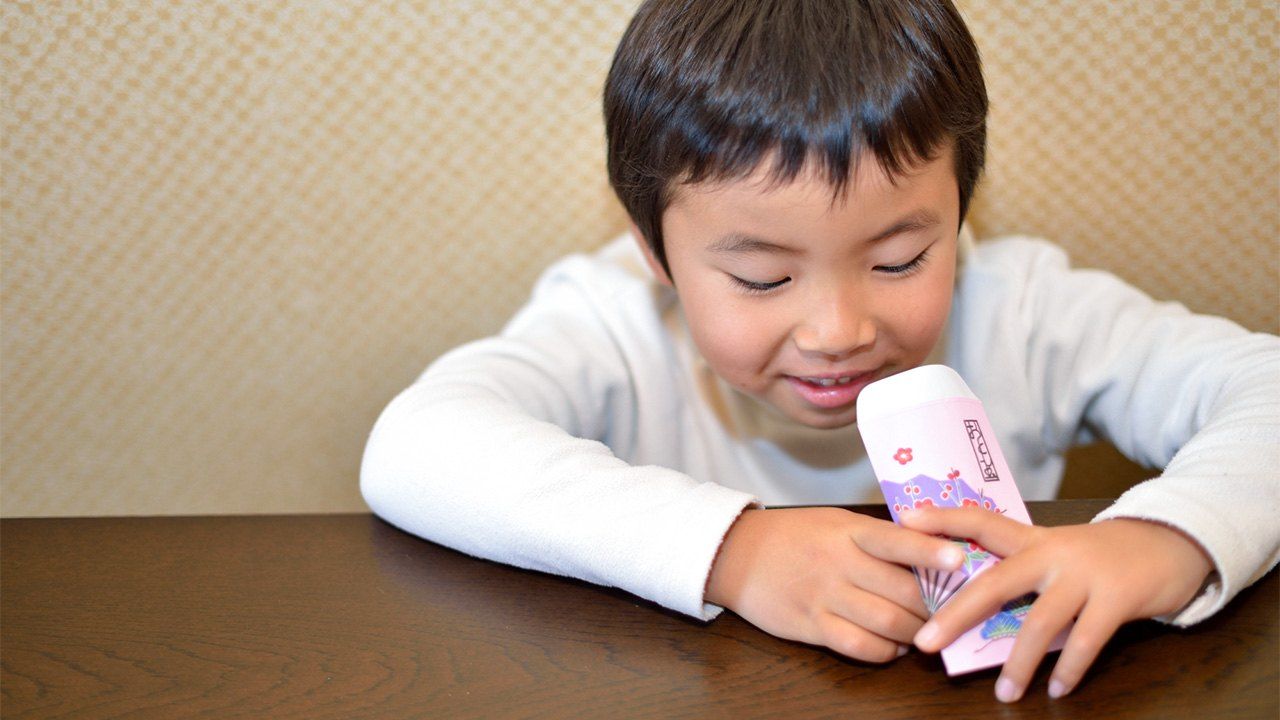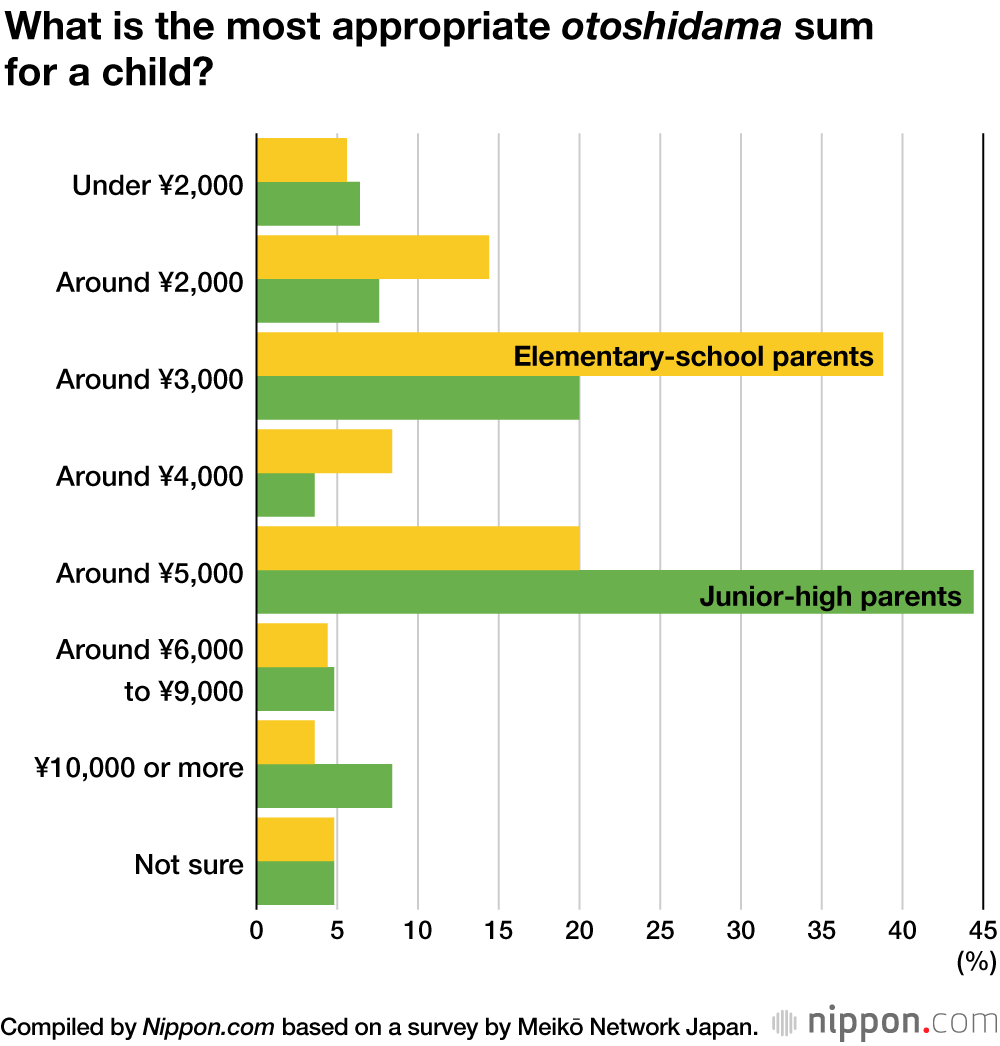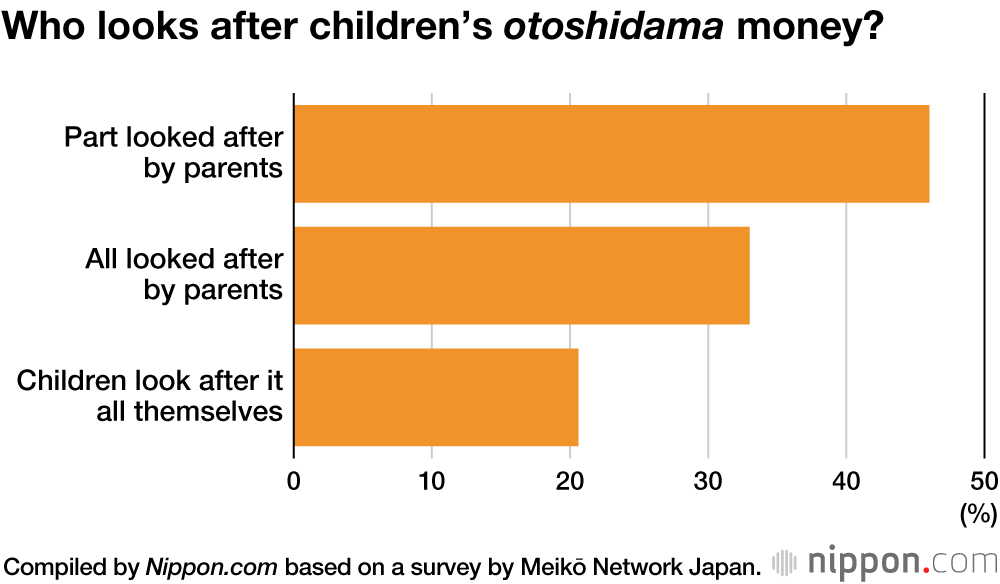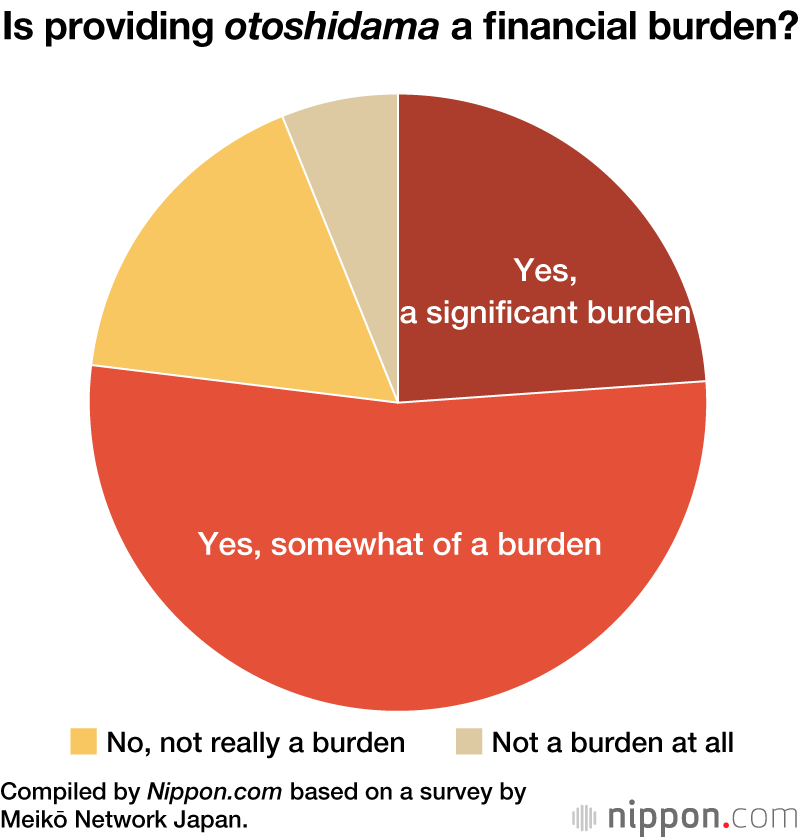
“Otoshidama” New Year Money Gifts Adored by Kids, But a Chore for Parents
Society- English
- 日本語
- 简体字
- 繁體字
- Français
- Español
- العربية
- Русский
The New Year’s holiday (shōgatsu) in Japan calls to mind the greeting cards (nengajō) given and received and the traditional osechi ryōri dishes that people eat at home. But the thing that Japanese children look forward to most this time of year are the small money gifts called otoshidama received from parents and grandparents. The money is a chance for kids to buy the expensive video games or toys that they are unable to afford with their usual allowance.
Meikō Network Japan, an operator of “cram schools” offering private tutoring, conducted a survey that asked parents what they consider a suitable otoshidama amount for their child. The results showed the following approximate sums were considered the most appropriate for different age groups: ¥3,000 for fourth- to sixth-graders (38.8% of parents surveyed) and ¥5,000 for junior high school students (44.4%).
As for who looks after the otoshidama money, only around 20% of parents surveyed allowed their children to manage all of the money themselves, while the remaining 80% kept part or all of the money themselves until it was time to spend it. The most common thing to spend the gift money on, according to 71.9% of those surveyed, was toys or video games, while 39.1% used it to buy books, manga, or magazines. The survey also found that 70.1% of the children saved part or all of the money they received.
As for the financial burden of doling out otoshidama every year, a combined total of 77.2% said that it was either a “significant burden” or “somewhat of a burden.” The primary source of the burden, according to 76.9% of the respondents (multiple answers allowed), was providing otoshidama to the children of relatives, followed by the 35.8% whose main burden came from giving money to their own children. Some of the comments received from parents answering the survey included the following: “If my child receives otoshidama from someone else, I need to give it to that person’s child, so I consult with other parents to make sure that I give the same amount to my child’s friend or cousin” (parent of fifth-grader); “There are other things to buy around the New Year holiday so even though the otoshidama isn’t that much it’s a bit of a burden” (parent of second-year junior-high student).
Perhaps because of the nuisance involved, the most common answer among parents regarding the age up to which their children should be given otoshidama was “high-school age,” as reported by 49.6% of the survey respondents. Most parents stop handing out money at New Year to children that have gone off to university.
Opinions on the tradition of otoshidama are clearly divided between the children on the receiving end and the parents who are obliged to stuff the envelopes with their hard-earned cash.
(Translated from Japanese. Banner photo © Pixta.)


